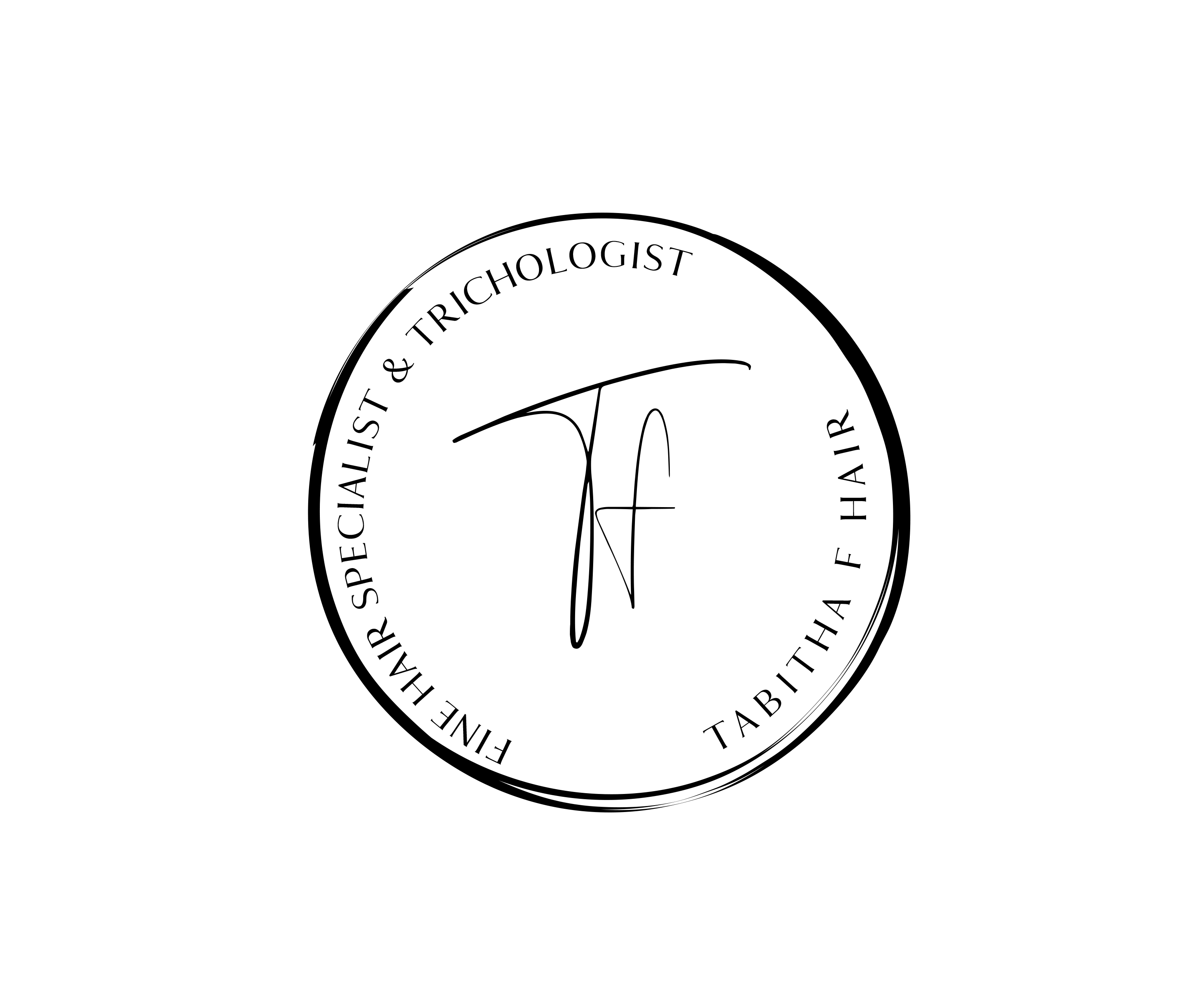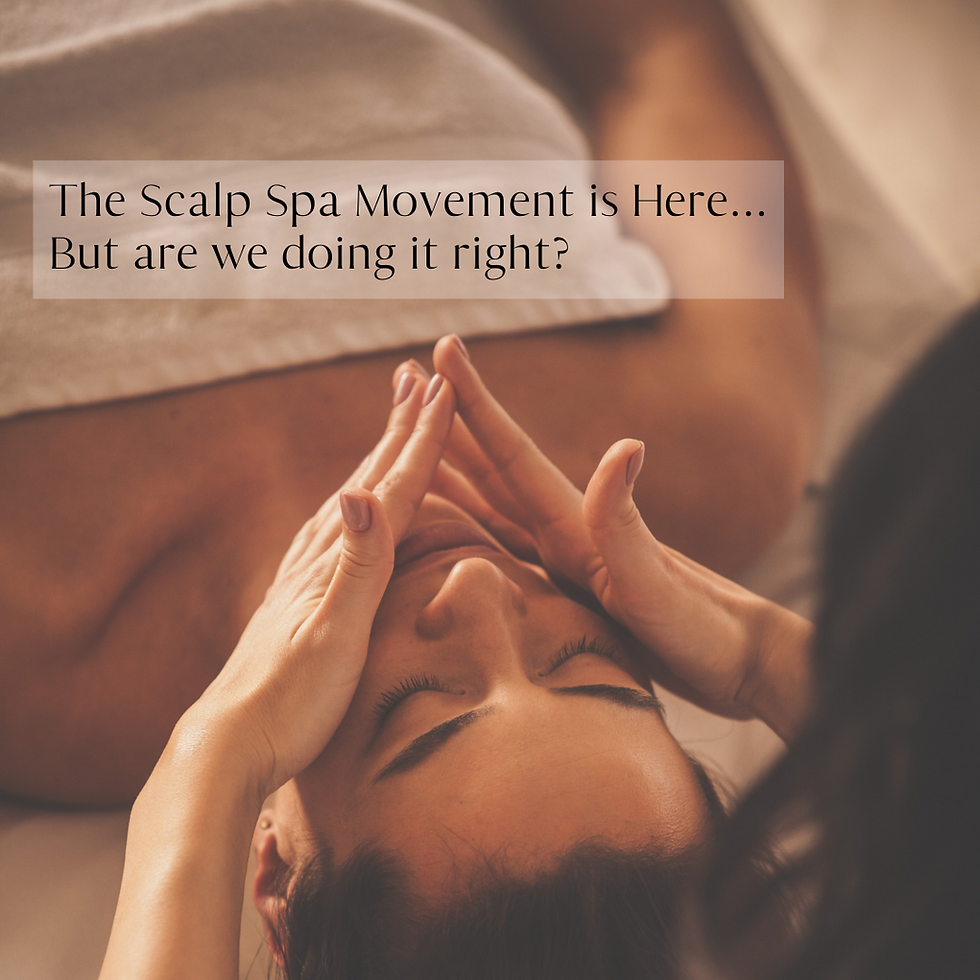Understanding the Real Reasons Behind Hair Thinning
- Tabitha Fredrichs

- May 6
- 4 min read

Let’s be real—more and more of our clients are sitting in our chairs asking, “Why is my hair thinning?” And if you’re anything like me, you’ve probably felt the pressure of not having a clear answer beyond blaming age, stress, or genetics.
But here’s the thing: as beauty pros, we have the power to do more than just cover up thinning hair with a great cut or color. We can actually help our clients understand what’s going on—and give them options that make them feel supported and hopeful again.
So let’s break it down—what’s really behind hair thinning, and why it matters that we, as hairstylists, understand the root cause.
Genetics – The Sneaky Culprit We Can’t Ignore
You’ve probably heard it from clients: “My mom lost her hair, so I guess it’s just happening to me too.” And sure, androgenetic alopecia is real. It’s the most common cause of hair thinning and yes—it runs in families.
BUT... the myth that it only comes from your mom’s side? That’s just a myth. We now know that genetic hair loss can come from either side of the family, and it shows up differently for everyone. As stylists, we need to start asking the right questions and paying attention to miniaturization patterns (hint: break out that dermascope if you’ve got one!).
Hormones – The Uninvited Salon Guest
Pregnancy, postpartum, menopause, thyroid issues—yep, we’re talking hormone chaos. And your client doesn’t need to be 50+ to be dealing with it. Hormonal imbalances can sneak up and show up as thinning, stunted growth around the hairline, and more shedding than usual.
We’ve got to be the ones asking, “Have you had any hormonal changes lately?” not just “What shampoo are you using?”
Medical Conditions – The Hidden Layer No One Talks About
Conditions like alopecia areata or scalp inflammation can lead to thinning—and sometimes, clients don’t even know they have them. I can’t tell you how many people I’ve seen with patchy, slow-growing areas and zero idea there’s a deeper issue.
If we want to serve our clients at a higher level, we’ve got to be aware of the signs and be confident enough to say, “Hey, this looks like something that may need further evaluation. I’m here to support you in figuring it out.”
Lifestyle – Because Hair Shows What the Body Feels
Here’s your reminder: hair is not essential tissue. It’s the first thing to go when the body is stressed out, overworked, undernourished, or running on fumes.
If your client is skipping meals, not sleeping, living off caffeine, or stressed beyond belief, their hair will tell on them. And that’s our opportunity to gently guide them to better routines, better nutrition, and better self-care—without judgment.
Let’s Talk About What Really Helps: Lifestyle Tweaks That Matter
Now that we’ve covered the big “whys” behind thinning, let’s not forget the everyday stuff—the things we can help our clients shift little by little.
Eat Like You Mean It
We’ve gotta help our clients understand that great hair doesn’t just come from a bottle—it comes from the inside out. Hair is a protein fiber, so if your client is living off coffee and crackers, it’s no wonder their strands are snapping. Encourage them to eat real food—eggs, leafy greens, healthy fats, and maybe throw in some dark chocolate (because, balance). If we can plant the seed for better nutrition, their hair will thank us later.
Manage the Stress Storm
I always say—stress is the sneakiest hair thief. Whether it’s a breakup, burnout, or just life doing what it does, we need to be gentle in how we bring this up. Even recommending journaling, breathing exercises, or walking outside can help. Stress throws off everything—hormones, the gut, and the hair cycle. Helping our clients calm the storm inside helps calm the shedding outside.
Be Kinder to the Hair
Tight ponytails. Daily flat ironing. Bleach sessions without proper aftercare. You know the drill. Now more than ever, we have to coach our clients on preserving the hair they still have. That means talking about proper pH, cutting back on heat, using leave-ins, and skipping products that strip the scalp. We’re not just stylists anymore—we’re hair preservationists.
Let’s Be the Professionals They Deserve
Here’s the truth: clients are overwhelmed. They’ve already Googled 57 things and tried six of them before they even sat in your chair. What they haven’t had? A hair professional who actually understands what’s going on and knows how to help.
This is where you get to level up. You’re already amazing at styling and color—but when you start talking about root causes, lifestyle, nutrition, and what you see under the dermascope? You become the trusted expert.
Want to take it even further? My Trichology Certification teaches you exactly how to connect the dots—so you’re not just guessing, you’re confidently leading. Clients are craving this kind of care. Let’s be the ones who give it to them.
Tabitha





Comments